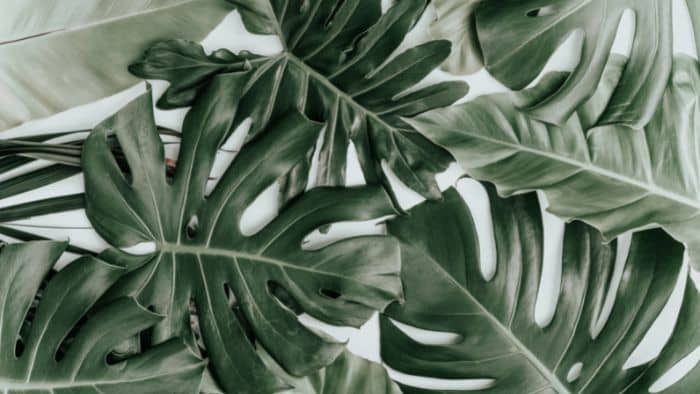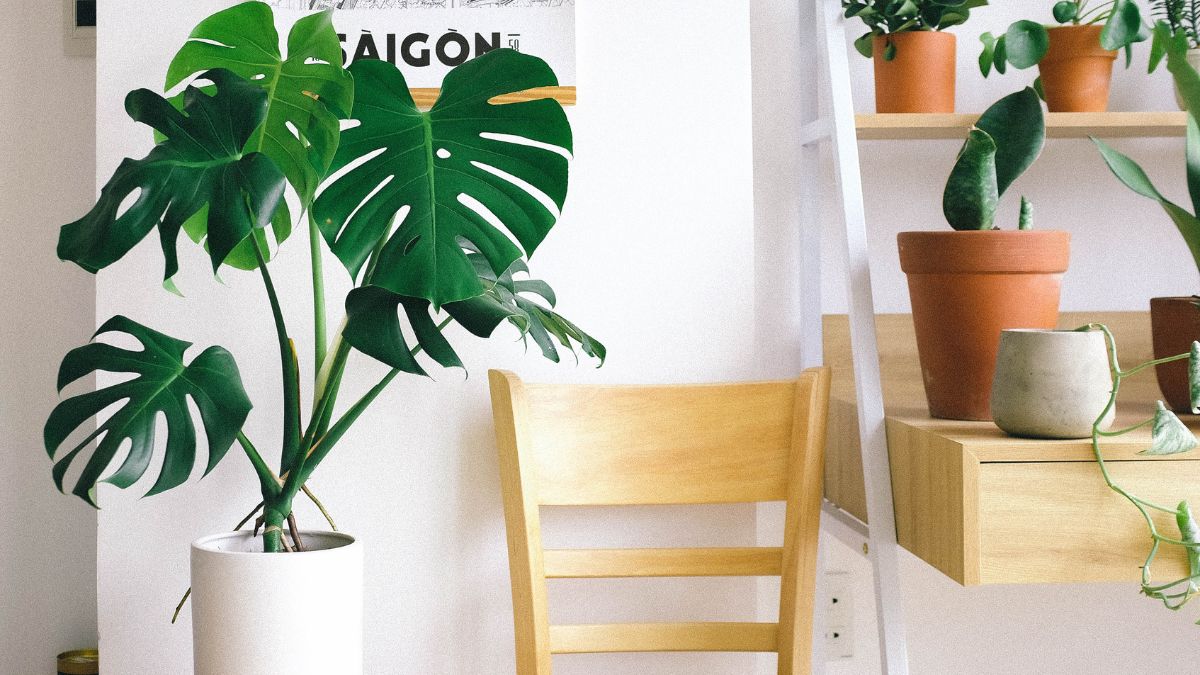This article details how to prepare the best soil for Swiss cheese plants. These beautiful plants have characteristic holes in their leaves, and, if given the right soil make beautiful indoor plants. They can even be trained to dangle down stairwells and root into multiple pots on different floors. Read more to find out how to make this delicious monster your star home plant.
What Is A Swiss Cheese Plant?
This plant is also known as a delicious monster, and its species name even denotes this – Monstera deliciosa. The name Swiss Cheese Plant specifically refers to the big holes in its leaves that make it look similar to the holes in types of Swiss cheese.
The plant has a curious growth habit whereby it will grow away from light – this was how it would find a tree trunk, which it would lean against and eventually grow upwards on. Indoor gardening with this plant can therefore be a bit unusual as it is one of the few house plants that will seek dark corners and grow away from the sun!!

What Is The Best Soil For Swiss Cheese Plants?
To prepare the best soil for Swiss Cheese plants, you need to mimic what would be on the forest floors where they grow naturally. This is a mixture of compost, rotting wood, and some moss. Many people use soil mixes that contain peat moss – peat moss is a finite global resource and its use for anything should not be encouraged. Hence I will provide a responsible alternative recipe for the soil that does not use peat moss.
I have quite a few of these plants and my mix comprises 1 part milled pine bark, 1 part hydrated coco-coir, 1 part rich potting soil, and 1 part pearlite. I love pearlite and put it in everything. It seems you cannot go wrong with this stuff. This mix appears to be perfect as my plants grow very well!
What Are The Holes In A Swiss Cheese Plant’s Leaves Called?
The leaves are called fenestrate leaves. This term basically is a corruption of the Latin word for windows. So they are leaves with windows in them – holes you can see through!! The leaves start off as solid leaves, and as they get larger and older the holes develop. I love watching this process happen. The leaves emerge from the plant with great energy when each leaf unfolds. It is quite amazing how fast they grow and unfurl.
I often trim older leaves from the plants and use them in large vases to place in corners and give the impression of potted plants. The leaves last for months indoors as long as the leaf stem is in water.
How To Repot A Swiss Cheese Plant
When I moved these from my garden into pots, I found that the actual main plant has quite a shallow root structure. However, they tend to have these creepy crawly aerial roots that trail along the ground. Hence when I have potted outdoor plants into indoor pots as gifts, I had to first remove all the runner roots by pulling them out of the topsoil – this is very easy. Then you just remove the main root ball which is about a foot deep into the soil. From a pot just tap gently around the edge of the pot and then pull the plant – it should pop out of the pot.
Once the plant is free of the pot or ground, you place it in the new pot (which is larger than the old pot) and fill gently around the plant with your soil mix until it is seated. Wait a few hours and water the potting soil mix in, and then over the next few days, you will have to add a bit more soil as it subsides. I find that the root ball is a bit chaotic, so getting the soil to settle is not entirely easy.
These plants can tolerate a few days of little water, so I normally water the soil in, then allow it to dry for a few days, and resume a weekly watering schedule after 10 days. This minimises risk of root rot.
Swiss Cheese Plant Pot Size
If you mix the best soil for swiss cheese plants as detailed, you should be aware that the bigger the pot, the bigger the plant! These plants will be quite small if you plant them in a small pot, and quite huge in a big pot! So if you have a lot of space you can use a large barrel pot type planter.
A pot such as this will produce a relatively compact Swiss Cheese plant that will fit in a corner and be relatively discreet. A pot such as this will on the other hand produce a truly giant Swiss Cheese plant that will really make a statement. I would suggest starting with a smaller pot and seeing how big you want your plant to be.
They can live in the same pot for decades! I know a series of these that have been at my old university’s Botany Department, that grow down a flight of stairs, and these have been there for 30 years and have never been repotted! They are stunted, but beautiful.
Can Swiss Cheese Plants Grow In Water?
We were looking at the best soil for Swiss Cheese plants! Why do you want to grow them in the water!! There are ways to do this – much like growing Lucky Bamboo in water – you can place them in a pot that has no drain, and then every two or so weeks replace the nutrient water in which they are growing.
Once you get tired of this, repot the plant as detailed above!! I find growing plants in water brings smells and mosquitoes into my house, neither of which I need in any more abundance than they already are.
In Conclusion – The Best Soil For Swiss Cheese Plants
I hope this article has helped you understand how to mix and use the best soil for Swiss Cheese plants. This is a lovely plant to grow – it is tough, robust, and just looks amazing. Enjoy the adventure!







